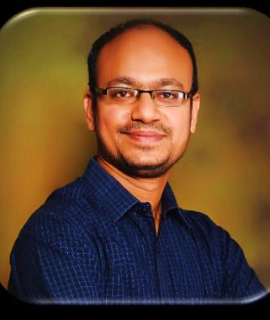Title : Electrochemical Sensing of Mercury(II) Using a Nickel Ferrite/Graphitic Carbon Nitride Nanocomposite Modified Screen-Printed Electrode as One-Shot Disposable Sensor
Abstract:
A simple and novel strategy for electrocatalytic detection of mercury(II) ion was successfully achieved on nickel ferrite embedded graphitic carbon nitride modified screen-printed electrode (g-C3N4/NiFe2O4/SPE). g-C3N4/NiFe2O4 composite was prepared by co-precipitation method and was characterized by various analytical spectroscopic techniques. The detailed studies confirmed that the synthesized g-C3N4/NiFe2O4 were crystalline, grown well in high density and exhibited good electrocatalytic properties. The electrochemical detection of mercury(II) ion at g-C3N4/NiFe2O4/SPE has been studied by using cyclic voltammetry (CV) and differential pulse anodic stripping voltammetry (DPSV). The results illustrate that g-C3N4/NiFe2O4 composite modified SPE has showed better electrocatalytic activity towards mercury(II) detection than that of bare SPE, g-C3N4/SPE and NiFe2O4/SPE in acetate buffer solution of pH 5. The proposed sensor showed acceptable reproducibility and stability under optimal conditions with high accessible surface area and antifouling properties. Additionally, the sensor showed very good linear range from 10 - 900 nM and based on the calibration plot, limit of detection (LOD) was calculated and was found to be 2.35 nM. Further, the proposed electrochemical sensor has been successfully employed to determine mercury(II) content in real sample matrices.
Audience take-away:
• Here in this proposed research work, a simple and rapid detection of mercury ions have been determined as this element is toxic to mankind and environment.
• The fabrication of electrode opens a new avenue for the determination of various analytes.
• The audience will be able to understand some fundamental terminologies like linear range, detection limit, repeatability, reproducibility and stability of the modified electrode.
• How will this help the audience in their job? Is this research that other faculty could use to expand their research or teaching? Does this provide a practical solution to a problem that could simplify or make a designer’s job more efficient? Will it improve the accuracy of a design, or provide new information to assist in a design problem? List all other benefits.
• Especially, in designing new electrodes, these kind of work really help them to understand this basic phenomenon.
• Researchers can be used these bespoke screen-printed electrodes for the analysis of various real sample matrices which in turn they do get a job in industries.
• The prepared low cost material can be prepared in bulk and can be used for various applications.
• It really opens a new avenue in analytical chemistry domain. As these electrodes are one-shot disposable sensors and can be analyzed the target analytes on spot and these electrodes required no polishing or smoothening. And it demands very low volume of the analyte which is being analyzed


